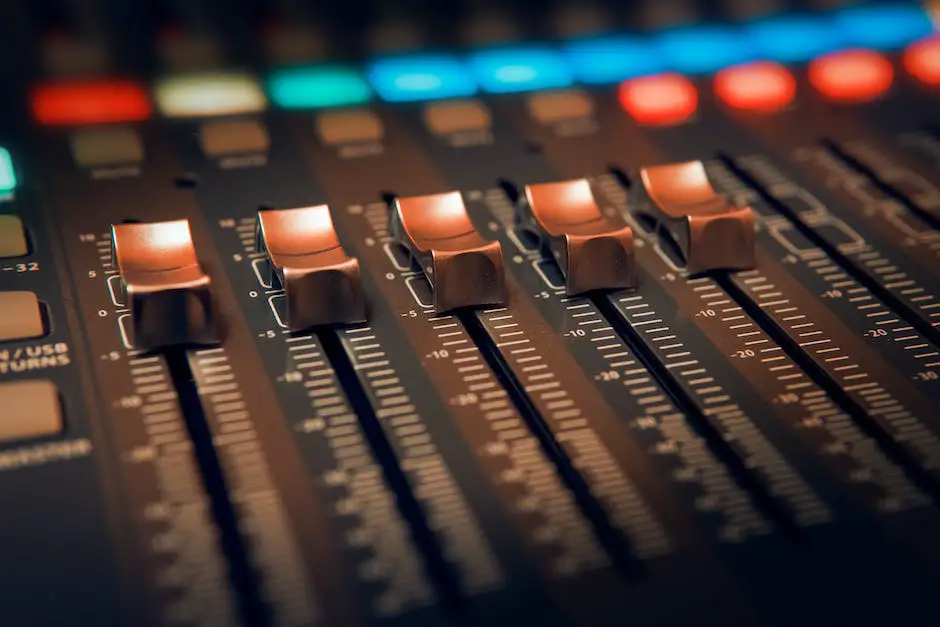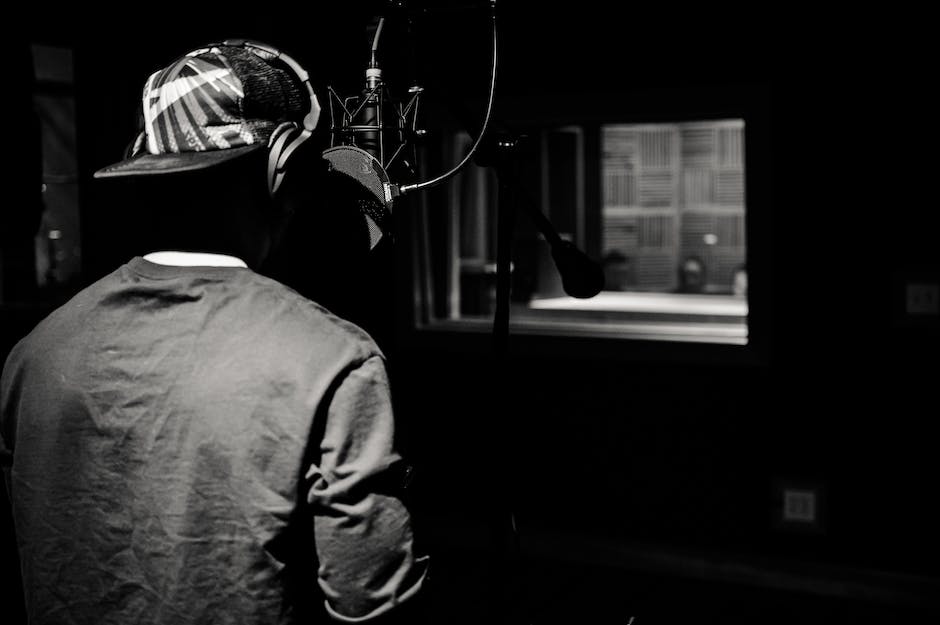The world of vocal recording offers boundless opportunities for the creative mind. The ability to capture and manipulate the human voice opens a realm of possibilities, both for artists who wish to finesse their work to perfection and for hobbyists who simply enjoy the process. As the vital cornerstone of any satisfactory vocal output, understanding the fundamental principles of vocal recording – such as effectively managing ambient noise, resonance, and pitch control – is key to producing high-quality results. Equally important is discovering the rich catalogue of free recording software available, each with its own distinct features and benefits. Taking the time to choose software that aligns with your individual needs can drastically enhance the recording experience and final product.
Understanding basic vocal recording
The Core Principles of Vocal Recording: An In-depth Tech Analysis
Decoding the intricate process of vocal recording is a fascinating journey for tech enthusiasts like us, especially when veiled in the mystic of sound engineering. It encapsulates an ingenious blend of artistry and technology, stitching them together to create auditory magic. This article will dive deep into this realm, outlining the core principles of vocal recording for those passionate about tech and its intersection with sound production.
- Microphone Positioning
- Microphone Choice
- Audio Interface
- Acoustic Treatment
- Correct Gain Staging
- Use of A Pop Filter
- Comprehension of Compression, EQ, and Reverb
The placement of the microphone is fundamental to high-quality vocal recording. The distance from the source and the orientation of the microphone significantly contribute to the capture of clean vocals and the minimization of background noise. To capture the full sweep of tones in the human voice, one must position the microphone slightly off-axis and about 6-12 inches away from the singer. This technique is referred to as close miking, a favorite among sound engineers.
The choice of microphone dramatically impacts the quality of recorded vocals as every microphone has its unique sonic character. Condenser microphones are traditionally favored for their heightened sensitivity to sound, wide frequency response, and ability to capture minute vocal details. These features make them a perfect pick for studio recording.
An audio interface is the heart of a home recording setup, converting analog sound to digital for your computer to process and vice versa. A good choice ensures transparent, high-quality audio conversion and can offer plenty of inputs and outputs for future studio expansion. It’s essential to use a reliable audio interface for low noise and high headroom.
Sound reflections within a room can compromise the quality of the recording by causing phase cancellation, resulting in a ‘hollow’ or ‘phasey’ sound. Acoustic treatment minimizes these reflections, involving the use of materials such as foam panels and diffusers to absorb, or diffract the sound waves. These are strategically placed around the recording space to optimize vocal capture.
Gain staging, the process of managing sound levels at each step of the audio path, is crucial for obtaining a clean, distortion-free recording. It requires adjusting the gain for each piece of recording gear used, ensuring that the sound is sufficiently loud without causing clipping or distortion.
A pop filter is instrumental in minimizing plosive sounds – the bursts of air produced when pronouncing words starting with ‘p’ or ‘b’. This gust of air can hit the microphone’s diaphragm causing an unpleasant low-frequency sound. The pop filter acts as a shield, catching this air before it reaches the microphone.
A good understanding of sound processing tools – compression, EQ, and reverb – is crucial in achieving a polished vocal recording. Compression helps balance the vocal dynamic range, EQ gives tone shaping abilities for clarity and presence, and reverb provides spatial realization and depth to the voices.
Mastering the art and science of vocal recording could be the difference between an ordinary and an extraordinary sonic experience. Following these principles will not only unveil the potential of recording technology but also unleash the power of artistic expression. As always, the tech-centered journey continues — and isn’t it fascinating?

Exploring free vocal recording software
Audio Recording: Unveiling Hidden Aspects
In the realm of audio recording, beyond the quintessential elements such as microphone positioning, choice, audio interfaces, acoustic treatment, correct gain staging, and the use of pop filters alongside understanding compression, EQ, and reverb, lurk other pivotal aspects. Tech enthusiasts, as adept trouble-shooters, always find ways to fine-tune every operation, including audio recording. So, let’s dive into the unchartered territories of recording techniques and get down to the nitty-gritty.
First up in the further exploration of audio recording is the art of employing high-pass filters. This technique helps you to combat unwanted low-frequency rumbling noises. The methodology not only clears your audio mix but also preserves the vital headroom by filtering out the low-frequency sounds that aren’t essential to the piece. To utilize a high-pass filter, search for the specific function in your audio interface or digital audio workstation (DAW) software.
Voice doubling is another excellent technique that can add depth and warmth to your recordings. To expedite this, you record the same parts twice and then pan one recording hard left and the other hard right in the stereo field. With voice doubling, remember, consistency is key. If your two performances don’t align tonally and rhythmically, you could be heading for a sonic mishap rather than an aural treat.
Thirdly, understand degradation and how it enhances audio recording. In an era where digital perfection remains the holy grail, introducing a bit of degradation or ‘imperfection’ to your audio can make it sound more organic and less harsh. Techniques for doing this can range from recording onto tape and then back into your DAW or using plugins that simulate tape or tube saturation.
Next in line is the utilization of time-based effects with precision. Delay and reverb are tools that you can use to make your recordings sound more professional. Yet, they are like double-edged swords. Too much of these can make the audio mix messy and unclear. Find the sweet spot where they add depth without muddying the mix.
Lastly, delve into the realm of automation. It’s a potent weapon for controlling volumes of distinct tracks, adjusting the level of effects during certain sections of the recording, etc. Avoid the misconception that automation is only for post-production. Use it during the recording phase to maintain the consistency of sound levels, thus avoiding distortion and clipping.
These are the less discussed but extremely essential steps towards capturing that perfect audio. Remember, the best tech enthusiasts aren’t born overnight; They sweat it out, experiment, learn from their errors, and grow continually. Now, get armed with these newly acquired recording techniques and make your audio mix come to life.

Using free software to record vocals
Unlocking the Potential of Free Software for Vocal Recording
Now that you’ve got the hardware set up perfectly, it’s time to delve into the boundless potential of free software for vocal recording. This can level up your game in a significant way. Even more so, when it comes to optimizing your vocals, the sky’s the limit with these digital tools.
Starting strong is the open-source software, Audacity. Treat it as your go-to friend for basic recording and editing needs. Its talent lies in being simultaneously intuitive and robust, accommodating everyone from novices to advanced users. Besides the standard recording, it offers an impressive array of effects including noise reduction and pitch correction, making it a comprehensive tool in every tech enthusiast’s recording arsenal.
For a user seeking a more extensive feature set, look no further than Tracktion’s Tracktion7. It’s a fully-fledged digital audio workstation (DAW). Record, edit, mix and render with all versatility that you’d expect from a premium software. Couple this with its visually intuitive interface and you’re looking at one of the best free recording software currently available.
Another brilliant choice is Cakewalk by BandLab, a redesigned successor of the previously paid software, SONAR. This powerful software for Windows not only offers advanced settings for vocal recording, but also brings an unlimited number of audio tracks available at your disposal. Added to its features are integrated professional effects, a feedback metering, and a beautiful interface that makes working with it a breeze.
Don’t forget about Ardour, a noteworthy competitor in the free DAW department. Available for both Linux and MacOS, it caters to those who desire professional-grade software but may not have the budget for it. Ardour prides itself on its flexibility, allowing users to record, edit, mix, master and even write their own plugins if need be.
Once you’ve chosen your software of choice, it’s important to understand the software inside and out. Spend time familiarizing yourself with the user interface, keyboard shortcuts, menus, and toolsets.
One crucial aspect to master is Noise Reduction. Free tools often have built-in features that allow you to mitigate or eliminate unwanted background noise. It’s important to use these tools sparingly as overuse can lead to an unnatural sounding mix.
Pitch correction is another essential tool in your software toolkit. While nothing beats good old-fashioned vocal practice, pitch correction tools can help iron out any minor key discrepancies, providing you with a polished final product.
Don’t underestimate the importance of ‘Mixing’ either. This involves balancing levels of individual tracks to make them harmonize instead of compete. Here, remember that less is often more. Resist the urge to go overboard with volume or effects.
Finally, mastering your piece brings all efforts together, giving it a professional finish. It provides a sense of coherence and uniformity to the project. Free software options often provide mastering suite plugins to aid you.
In conclusion, vocal recording isn’t confined to professionals with expansive budgets. By choosing the right free software and taking the time to understand its functionalities, everyone can craft high-quality vocal tracks at no cost. Here’s to the joy and power of technology democratizing creativity!

By immersing yourself in the theories and principles of vocal recording and becoming adept with an array of free recording software, you can unlock a wealth of creative and technical potential. With a firm grasp on how to navigate and use these resources, you’re well-equipped to step into the exciting world of producing stellar vocal records. The journey may seem daunting at first, but remember that practice breeds confidence. As you continue to learn and grow your skills, you’ll find the process becomes increasingly intuitive, ultimately leading to a satisfying end result that you can be proud of. Always strive to expand your knowledge and improve your craft – the beautiful world of vocal recording awaits.
Originally posted 2023-12-31 01:05:02.



